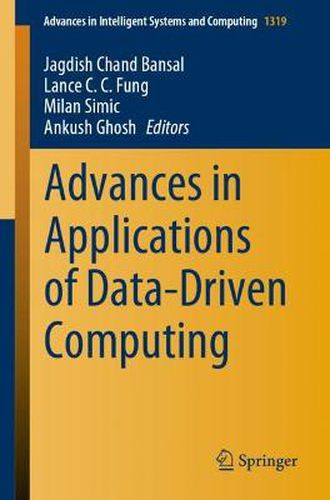Readings Newsletter
Become a Readings Member to make your shopping experience even easier.
Sign in or sign up for free!
You’re not far away from qualifying for FREE standard shipping within Australia
You’ve qualified for FREE standard shipping within Australia
The cart is loading…






This title is printed to order. This book may have been self-published. If so, we cannot guarantee the quality of the content. In the main most books will have gone through the editing process however some may not. We therefore suggest that you be aware of this before ordering this book. If in doubt check either the author or publisher’s details as we are unable to accept any returns unless they are faulty. Please contact us if you have any questions.
This book aims to foster machine and deep learning approaches to data-driven applications, in which data governs the behaviour of applications. Applications of Artificial intelligence (AI)-based systems play a significant role in today’s software industry. The sensors data from hardware-based systems making a mammoth database, increasing day by day. Recent advances in big data generation and management have created an avenue for decision-makers to utilize these huge volumes of data for different purposes and analyses. AI-based application developers have long utilized conventional machine learning techniques to design better user interfaces and vulnerability predictions. However, with the advancement of deep learning-based and neural-based networks and algorithms, researchers are able to explore and learn more about data and their exposed relationships or hidden features. This new trend of developing data-driven application systems seeks the adaptation of computational neural network algorithms and techniques in many application domains, including software systems, cyber security, human activity recognition, and behavioural modelling. As such, computational neural networks algorithms can be refined to address problems in data-driven applications. Original research and review works with model and build data-driven applications using computational algorithm are included as chapters in this book.
$9.00 standard shipping within Australia
FREE standard shipping within Australia for orders over $100.00
Express & International shipping calculated at checkout
This title is printed to order. This book may have been self-published. If so, we cannot guarantee the quality of the content. In the main most books will have gone through the editing process however some may not. We therefore suggest that you be aware of this before ordering this book. If in doubt check either the author or publisher’s details as we are unable to accept any returns unless they are faulty. Please contact us if you have any questions.
This book aims to foster machine and deep learning approaches to data-driven applications, in which data governs the behaviour of applications. Applications of Artificial intelligence (AI)-based systems play a significant role in today’s software industry. The sensors data from hardware-based systems making a mammoth database, increasing day by day. Recent advances in big data generation and management have created an avenue for decision-makers to utilize these huge volumes of data for different purposes and analyses. AI-based application developers have long utilized conventional machine learning techniques to design better user interfaces and vulnerability predictions. However, with the advancement of deep learning-based and neural-based networks and algorithms, researchers are able to explore and learn more about data and their exposed relationships or hidden features. This new trend of developing data-driven application systems seeks the adaptation of computational neural network algorithms and techniques in many application domains, including software systems, cyber security, human activity recognition, and behavioural modelling. As such, computational neural networks algorithms can be refined to address problems in data-driven applications. Original research and review works with model and build data-driven applications using computational algorithm are included as chapters in this book.